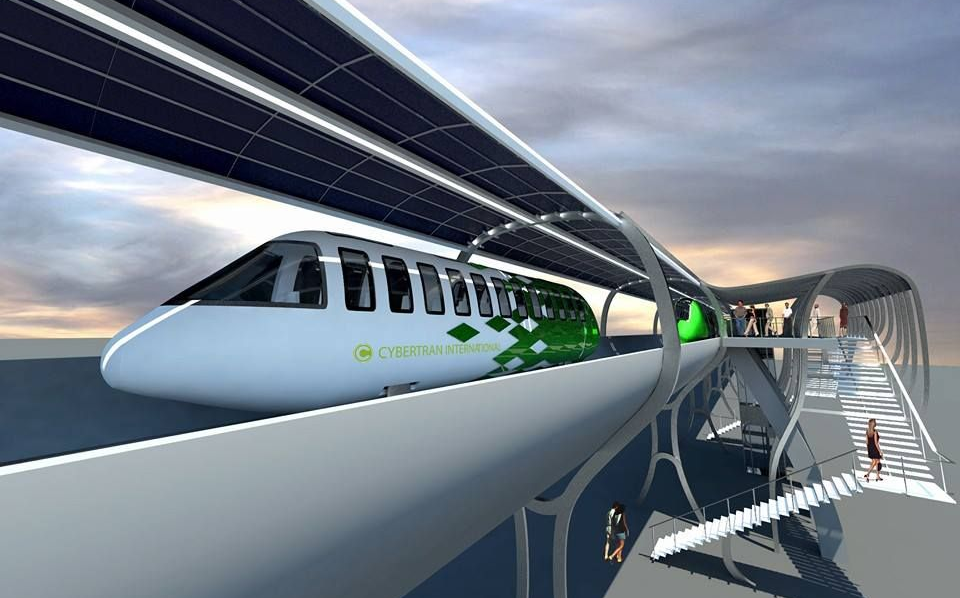Transportation Overview - part 3 of 3
Transportation Options - part 3 of 3, urban growth and politics

Current transportation
In the US, California embraced the political course for transportation advances with its $billions invested into a high-speed train infrastructure. The California high-speed rail (CA HSR) project is now teetering on the fulcrum of failure. Knowledgeable advanced transit industry experts will attest that the CA HSR project can be rescued by involving private sector innovation to integrate the hundreds of miles of allocated transit rights-of-ways with a central Statewide high-speed arterial.
The biggest matter of contention regarding intentional advancements with modes of transportation is politics. The most serious concern is in the question: are there any politicians experienced in advanced transit technology and sustainable urban growth? Where are the resumés? Can astute conclusions be reached without knowledge? Where are the consulting experts found since the government has no relationships established with the advanced transit industry? Can any level of elected US politician describe the details of China’s maglev technological details? Or why China is the global leader in advanced transit technology? Or explain why the US is 25 years behind China’s transportation technology?
Urban growth
Urban growth is extremely important, sustainable urban growth: even more so.
The government’s naive approach to advanced transit technology is detrimental. The constant politization and bureaucratization of the social structure, creates the financial inability to maintain and repair a decaying road infrastructure. Perhaps selective ignorance is a human condition when there are things one doesn't understand, however; the suffering public pays the penalty of consequences for government mismanagement. This is explained as a travesty of incompetence.
An example of this incompetence is California's HSR. Can the failed project be rescued? With the interaction from the private sector, the answer is absolutely: yes. However, the repetitive process of the State's proposal is to obtain money from the carbon credit routine of Cap an Trade. The CA governor and the HSRA Director's solution is continuing the project by adding $1billion per year over the next 20 years, making sure nothing changes. In the words of an advanced transit industry Fellow: “Pursuing a 200-year-old transportation technology has amazingly negative consequences to a technologically advanced society.” The first several years of the project have had immediate results which are seen in Central California cities. There are giant swaths of concrete debris from the $15billion waste of taxpayer dollars. The dismay of closed roads and shuttered businesses are of no concern. The quality of life produced is devastation. Homeless camps abound in the shadows, unseen by the hidden eyes of chauffeured legislators smiling for their photo ops.
How loud does the alarm clock have to ring for people to awaken and realize the year is 2025? All urban growth is based on its primary source of transportation. There are only four types of land-use: nature, agriculture, transit oriented, and automobile centric land-use design. California has hundreds of miles throughout Central California that are existing allocate light-rail rights-of-ways. This means: they are existing transit corridors. Who has the common sense in political circles to consider these hundreds of miles as actual transit corridors?
The only considerations in government options for transportation today, are continuing to do nothing. Existing road replacement upgrades are deferred due to lack of budgetary outlays which rely on the bureaucracy procedure of State and Federal grant allowances. Road maintenance is allocated to its course of emergency filling of pot holes.
Land-use and transportation
The fundamental component to urban growth is its primary source of transportation. There’s tremendous concern regarding California’s current political directives: legislating high-density real estate mandates that don’t fit into the low and moderate density confinements of the automobile centric land-use design. This is nothing less than intentionally legislating severe damage to Californians’ quality of life. The proper way to approach land-use is to build a modern technology transit network and build-out an appropriate urban design utilizing the transit-oriented land-use real estate development. California has an abundance of existing allocated light-rail rights-of-ways within existing transportation corridors to easily accommodate sensible and cohesive high-density urban growth. The social aspects of compressed automobile centric land-use design is an unsustainable approach economically and socially. However, if the political intent is to cause social unrest and economic decline, this approach will reap that goal; perhaps within a decade or so. A politically radicalized social agenda, is irrelevant to the unbiased transportation base of land-use and the perpetual population increase of urban growth.
The new law concerning building apartments in old neighborhoods, is CA’s Senate Bill 9, enacted January 1, 2022. It provides ministerial approval of splitting existing single-family zone housing into two parcels, each with a duplex. Assembly Bill 1584 amends the Housing Accountability Act (HAA) which clarifies incentives and concessions to the State Density Bonus Law (SDBL), intending to increase SDBL projects.
How can these new legislative land-use decrees validate any semblance of traffic load reduction: it’s the absolute opposite of the governmental green propaganda. This legislative action to instantly quadruple housing density holds the prize for blind incompetence regarding transportation solutions. Again, to the earlier point of selective ignorance and unqualified elected officials making crucial decisions they’re totally unqualified to make decisions about. With passage of such decrees, it fully validates the importance of being cognizant to matters with which one is familiar with: in their decision making (rather than blindly being told what to do by their political overseer). With this rampant push to massively increase CA’s population density, what legislative acts are assigned towards decreasing community traffic loads and mediate congestion? What legislation is being created to minimize the increasing burdens of traffic accidents and their related insurance cost increases? Where is the legislation to reduce the rising costs of transportation? Does this not confirm these legislators as unqualified to arrive at transportation solutions?
Can this be perceived as anything other than a land-developer door grab? Does this not push the tone as unsustainability of environmental equity crime or social injustice? Again, is this legislative act a travesty of incompetence, or is it malicious intent towards the populous?
Today’s youth and transportation
Is there any hope that the younger generation entering the political arena will stay in tune with their assigned responsibility of improving the citizens’ quality of life? Is there coherence, as they become involved into politics, to look and see where these transit corridors are? Since they’ve existed for several decades, will there be any curiosity to utilize these major transportation corridors? The older generations were conditioned into conformity and unable to notice them. Perhaps the younger generations will be more perceptive. Or, perhaps they’ll be worse than the previous generations but, optimistically, they’re brighter.
What does it take to communicate intelligence or rational thoughts of common sense to bureaucracy? Its planning departments can only do what they’re told to do, so they hire embedded political consulting firms to compile convincing studies that agree with pre-determined outcomes. The elected officials are at the command of PACs and their favored donating constituents.
To the previous elected officials, the concept of practical transportation solutions was considered an impossible atrocity. Why? In the political world, it would take hundreds of millions of dollars in consultant fees to even look at such a monumental task. Nonetheless, one man: Elon Musk, took a handful of his employees and eliminated billions of dollars of waste in Washington DC within two months. That was impossible.
How many Californian politicians have any experience in the advanced transit industry? How can they possibly claim to have any knowledge about that industry or sustainable urban growth? It would be a viable conclusion that not one single member of California’s legislative body can answer this question correctly: What is the single most important component of sustainable urban growth?
Since it is the biggest responsibility of every elected official and every government employee to improve each citizen’s quality of life, what is the job of every politician? To serve the public. How can they most effectively perform their task? By paying attention to their duty and be cognizant of citizen’s needs, which some actually do their very best at doing.
Transportation is the foundation to all urban growth. Addressing transportation issues is extremely vital to every elected official; an issue that nearly every elected official has very little understanding of. Their understanding of land-use is the commercialization of zoning.
And the answer to the question; as the single most important and valuable component of sustainable urban growth is: dirt. It’s comprised of minerals and nutrients. It filters air and water, and absorbs sunlight. Most people overlook simplicity.
Conclusion
Changes in the future, require actions that alter things we do today.
The implementation of incremental transportation change can be gained by utilizing California’s existing allocated light-rail rights-of-ways with modern, efficient, automated, direct to destination, and lower cost advanced transit technology.
Transportation has to be sustainable: environmentally, economically, and socially.



